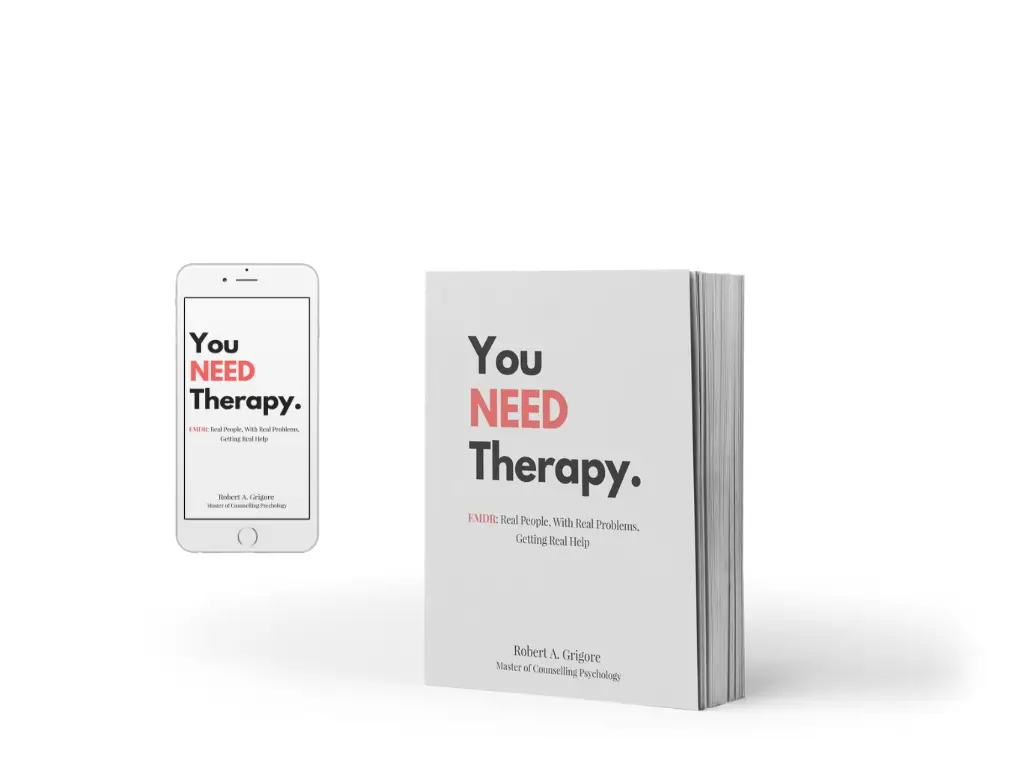Is Virtual EMDR Effective? Exploring the Possibilities of Online Therapy
DISCLAIMER: Any reference to companies sharing similar names as online or virtual EMDR is purely coincidental. Furthermore, while the author is an Approved EMDR Consultant by the EMDR International Association (EMDRIA), the content herein has not been evaluated by EMDRIA.
In today’s digital age, online therapy has become increasingly popular as a convenient and accessible alternative to traditional in-person therapy sessions. One specific form of online therapy that has gained traction is EMDR (Eye Movement Desensitization and Reprocessing). But can virtual EMDR be as effective as the traditional in-person treatment? This article delves into this question, exploring the possibilities and potential effectiveness of online therapy using EMDR.
EMDR is a psychotherapy approach that helps individuals process traumatic or distressing experiences by stimulating bilateral brain activity through eye movements or other bilateral stimulation techniques. Traditionally, it has been administered face-to-face with a therapist. However, with the advancements in technology, EMDR can now be conducted virtually through video conferencing platforms.
While there is a growing body of research supporting the efficacy of traditional EMDR, the effectiveness of virtual EMDR is still being explored. This article evaluates the existing studies and examines the unique benefits and challenges of online therapy. Whether you are a therapist considering virtual EMDR or an individual seeking treatment options, dive into this article to gain insight into the possibilities of online therapy and its effectiveness in addressing trauma and distress.
What is EMDR therapy?
EMDR (Eye Movement Desensitization and Reprocessing) is a form of psychotherapy that has been widely recognized as an effective treatment for individuals struggling with trauma, anxiety, and other mental health concerns. Developed in the late 1980s by Francine Shapiro, EMDR therapy is based on the premise that traumatic or distressing experiences can be stored in the brain in a way that disrupts an individual’s normal information processing.
The core of EMDR therapy involves the use of bilateral stimulation, such as rapid eye movements or tapping, to help the brain reprocess these traumatic memories. By engaging in this bilateral stimulation during the therapy session, the client is able to access and process the traumatic memories in a safe and structured environment, ultimately leading to a reduction in the emotional distress associated with the memories.
EMDR has been extensively studied and has been found to be an effective treatment for a variety of mental health conditions, including post-traumatic stress disorder (PTSD), phobias, depression, and even chronic pain. The therapy has been endorsed by numerous professional organizations, including the American Psychological Association and the World Health Organization, as a recommended treatment for trauma-related disorders. As EMDR continues to gain recognition and popularity, it has become an increasingly important tool in the field of mental health and wellness.
Understanding virtual EMDR therapy
As technology has advanced, the field of mental health has also evolved to incorporate new modalities of treatment, including online and virtual therapy. Virtual EMDR therapy is a form of EMDR that is conducted remotely, using video conferencing platforms and other digital tools to facilitate the bilateral stimulation and processing of traumatic memories.
The process of virtual EMDR therapy is similar to traditional in-person EMDR, with the therapist and client engaging in a structured protocol that involves the use of eye movements, tapping, or other forms of bilateral stimulation. However, instead of being physically present in the same room, the therapist and client interact through a secure video conferencing platform, allowing for a more convenient and accessible form of treatment.
Virtual EMDR therapy has gained traction in recent years, particularly in the wake of the COVID-19 pandemic, which has led to a significant increase in the demand for remote mental health services. By offering EMDR therapy online, therapists are able to reach a wider range of clients, including those who may live in remote or underserved areas, or those who are unable to attend in-person sessions due to physical or logistical constraints.
Benefits of virtual EMDR therapy
One of the primary benefits of virtual EMDR therapy is its increased accessibility. By eliminating the need for in-person sessions, virtual EMDR therapy allows individuals to access high-quality mental health care from the comfort of their own homes. This can be particularly beneficial for those who live in areas with limited access to mental health resources, or for those who may have difficulty attending in-person appointments due to physical, financial, or scheduling constraints.
In addition to improved accessibility, virtual EMDR therapy also offers a greater degree of flexibility and convenience for both the client and the therapist. Clients can schedule appointments at times that are most convenient for them, without the need to factor in travel time or other logistical considerations. Therapists, on the other hand, can expand their reach and serve a broader client base, as they are no longer limited by geographic location.
Another potential benefit of virtual EMDR therapy is the increased sense of privacy and comfort that some clients may experience. By participating in therapy from the comfort of their own homes, clients may feel more at ease and less inhibited in sharing their thoughts and experiences. This can be particularly beneficial for individuals who may be hesitant to seek in-person therapy due to concerns about stigma or social discomfort.
Research on the effectiveness of virtual EMDR therapy
As virtual EMDR therapy has become more widely adopted, researchers have begun to explore the effectiveness of this modality in comparison to traditional in-person EMDR. While the research in this area is still relatively limited, the existing studies have generally found promising results.
One study published in the Journal of EMDR Practice and Research in 2020 examined the outcomes of virtual EMDR therapy for individuals with PTSD. The researchers found that participants who received virtual EMDR therapy experienced significant reductions in PTSD symptoms, with outcomes comparable to those of traditional in-person EMDR. Additionally, the study found high levels of client satisfaction and engagement with the virtual therapy format.
Another study, published in the Journal of Anxiety Disorders in 2021, compared the effectiveness of virtual EMDR therapy and in-person EMDR therapy for individuals with anxiety disorders. The researchers found that both modalities were equally effective in reducing anxiety symptoms, with no significant differences in outcomes between the two groups.
How does virtual EMDR therapy work?
The process of virtual EMDR therapy closely mirrors the traditional in-person EMDR experience, with a few key differences. Instead of meeting face-to-face, the therapist and client connect through a secure video conferencing platform, such as Zoom, Doxy.me, or an integrated video platform.
During the virtual EMDR session, the therapist will guide the client through the standard EMDR protocol, which typically involves the following steps:
- History-taking and assessment: The therapist will gather information about the client’s presenting concerns, trauma history, and treatment goals.
- Preparation: The therapist will work with the client to establish a safe and comfortable environment for the therapy session, as well as affect-management techniques, and the therapist will provide psychoeducation about the EMDR process.
- Assessment: Here the therapist develops the “Target Sequence Plan” (the appropriate memories to be processed during treatment), and selects the memory (or cluster of memories) to be focused on for the next stages.
- Desensitization: The therapist will use various forms of bilateral stimulation, such as eye movements, tapping, or auditory tones, to help the client access and process their traumatic memories.
- Installation: The client will be guided through the reprocessing of their traumatic memories, with the therapist providing support and feedback throughout the process.
- Body Scan: The therapist now has the client check their body for any residual distress related to the focused target memory, and further desensitizes until confident all related distress is neutralized.
- Closure: Depending on time left during the session, the therapist will either move on to the next memory in the Target Sequence Plan or will facilitate the containment of the session to allow the client to leave the therapy session in a regulated state.
- Re-Evaluation: During the following session, the therapist and client will re-assess the previously desensitized target, ensuring the memory is fully processed, and then turn their attention on the next appropriate memory in the Target Sequence Plan until all memories are completely processed.
Throughout the virtual EMDR session, the therapist and client will maintain constant visual and audio contact, with the therapist closely monitoring the client’s responses and adjusting the therapy as needed. The use of secure video conferencing platforms ensures that the virtual EMDR experience is private, confidential, and as engaging as an in-person session.
Finding a reputable virtual EMDR therapist
As with any form of mental health treatment, it is important to ensure that you are working with a qualified and reputable virtual EMDR therapist. When searching for a virtual EMDR therapist, there are several key factors to consider:
Credentials and training: Ensure that the therapist is licensed and has received specialized training in EMDR therapy that is approved by the EMDR International Association. Look for therapists who have experience and expertise in delivering EMDR remotely.
Reputation and reviews: Research the therapist’s online presence and reviews from past clients. Look for therapists who have a strong reputation for providing high-quality, effective virtual EMDR therapy.
Secure technology: Confirm that the therapist uses a secure and HIPAA-compliant or PIPA-compliant video conferencing platform to ensure the privacy and confidentiality of your sessions.
Personalized approach: Look for a therapist who takes the time to understand your individual needs and tailors the virtual EMDR therapy to your specific goals and concerns.
By taking the time to thoroughly vet potential virtual EMDR therapists, you can ensure that you are working with a qualified and trustworthy provider who can help you achieve your mental health and wellness goals.
You can find reputable EMDR therapists on official websites such as EMDRIA and EMDR Canada.
Virtual EMDR therapy vs. traditional in-person therapy
While virtual EMDR therapy and traditional in-person EMDR therapy share many similarities, there are also some key differences to consider.
One of the primary advantages of virtual EMDR therapy is the increased accessibility and convenience it offers. By eliminating the need for in-person sessions, virtual EMDR therapy allows individuals to access high-quality mental health care from the comfort of their own homes, or office which can be particularly beneficial for those with limited mobility, transportation, or scheduling constraints.
Additionally, some clients may feel more comfortable and at ease participating in therapy from their own familiar environment, which can lead to a greater sense of privacy and openness during the sessions. This can be especially true for individuals who may be hesitant to seek in-person therapy due to concerns about stigma or social discomfort.
However, there are also some potential drawbacks to virtual EMDR therapy that should be considered. One key concern is the potential for technical difficulties or connectivity issues, which can disrupt the flow of the therapy session and potentially impact the effectiveness of the treatment. Additionally, some clients may find it more challenging to establish a strong therapeutic rapport with their therapist when interacting through a screen, which can be an important factor in the success of EMDR therapy.
From a physiological standpoint, virtual and in-person EMDR therapy work by utilizing the same mechanism, so ultimately, the choice between virtual EMDR therapy and traditional in-person EMDR therapy will depend on the individual’s preferences, needs, and circumstances. It is important for both clients and therapists to carefully weigh the potential benefits and drawbacks of each approach to determine the best course of action.
Success stories of virtual EMDR therapy
As virtual EMDR therapy continues to gain traction, there are a growing number of success stories that highlight the potential of this modality in addressing a wide range of mental health concerns.
One such story comes from a client who struggled with PTSD following a traumatic car accident. After several unsuccessful attempts at traditional in-person therapy, the client decided to try virtual EMDR therapy. Through the virtual sessions, the client was able to work through their traumatic memories in a safe and comfortable environment, ultimately experiencing a significant reduction in PTSD symptoms and a renewed sense of control over their life.
Another client, who had been dealing with debilitating anxiety and phobias, found that virtual EMDR therapy was a game-changer in their treatment journey. By engaging in the virtual therapy sessions, the client was able to access and process the underlying traumatic experiences that were fueling their anxiety, leading to a marked improvement in their overall mental well-being and quality of life.
These success stories underscore the potential of virtual EMDR therapy to provide effective and accessible mental health treatment, even for individuals who may have struggled with traditional in-person therapy approaches. As more individuals seek out and experience the benefits of virtual EMDR therapy, the field continues to evolve and demonstrate the transformative power of this innovative treatment modality.
Potential limitations of virtual EMDR therapy
While virtual EMDR therapy has shown promise in providing effective and accessible mental health treatment, there are also some potential limitations and challenges to consider.
One of the primary concerns with virtual EMDR therapy is the potential for technical difficulties or connectivity issues, which can disrupt the flow of the therapy session and potentially impact the effectiveness of the treatment. Factors such as internet stability, camera quality, and audio clarity can all play a role in the success of a virtual EMDR session.
Another potential limitation is the difficulty in establishing a strong therapeutic rapport between the client and the therapist when interacting through a screen. The in-person connection and nonverbal cues that are often crucial to the EMDR process may be more challenging to replicate in a virtual setting. This can be especially true for clients who may have difficulty opening up or establishing trust in a virtual environment.
Additionally, there are concerns about the potential for distractions or interruptions during virtual EMDR sessions, as clients may be participating from their own homes or other environments that may not be as controlled or private as a traditional therapy setting. This can impact the client’s ability to fully immerse themselves in the therapy process and may limit the effectiveness of the treatment.
It is important to note that these potential limitations do not necessarily mean that virtual EMDR therapy is ineffective or unsuitable for all clients. With careful consideration of the client’s needs and preferences, as well as the use of appropriate technology and protocols, many of these limitations can be addressed and mitigated. However, it is essential for both clients and therapists to be aware of these potential challenges and to work together to ensure the best possible outcome.
Conclusion: The future of virtual EMDR therapy
When the world was forced to navigate the ongoing challenges of the COVID-19 pandemic, there was an increased demand for accessible mental health services, a demand that has remained fairly stable. As such, the future of virtual EMDR therapy looks increasingly promising.
The research conducted thus far has demonstrated the potential of virtual EMDR therapy to provide effective and accessible treatment for a wide range of mental health concerns, including trauma, anxiety, and depression. As more individuals seek out and experience the benefits of this modality, it is likely that virtual EMDR therapy will continue to gain traction and become a more mainstream option for mental health care.
Furthermore, as technology continues to evolve and improve, the quality and reliability of virtual EMDR therapy sessions are likely to become even more seamless and engaging. Advancements in video conferencing platforms, virtual reality, and other digital tools may open up new and innovative ways to deliver EMDR therapy remotely, further enhancing the accessibility and effectiveness of this transformative treatment approach.
Ultimately, the future of virtual EMDR therapy will depend on the continued collaboration and innovation of mental health professionals, researchers, and technology experts. By working together to address the challenges and limitations of this modality, and to explore new and innovative ways to deliver high-quality EMDR therapy remotely, the field of virtual EMDR therapy has the potential to revolutionize the way we approach mental health treatment and support.
Scheduling a free consultation
If you or a loved one are seeking more information to determine if virtual or in-person EMDR therapy is a suitable option for treatment, please feel free to schedule a free consultation with our expert team. Schedule your free 45-minute consultation here. Consultations are always confidential and are securely encrypted at HIPPA and PIPA – level compliance.











